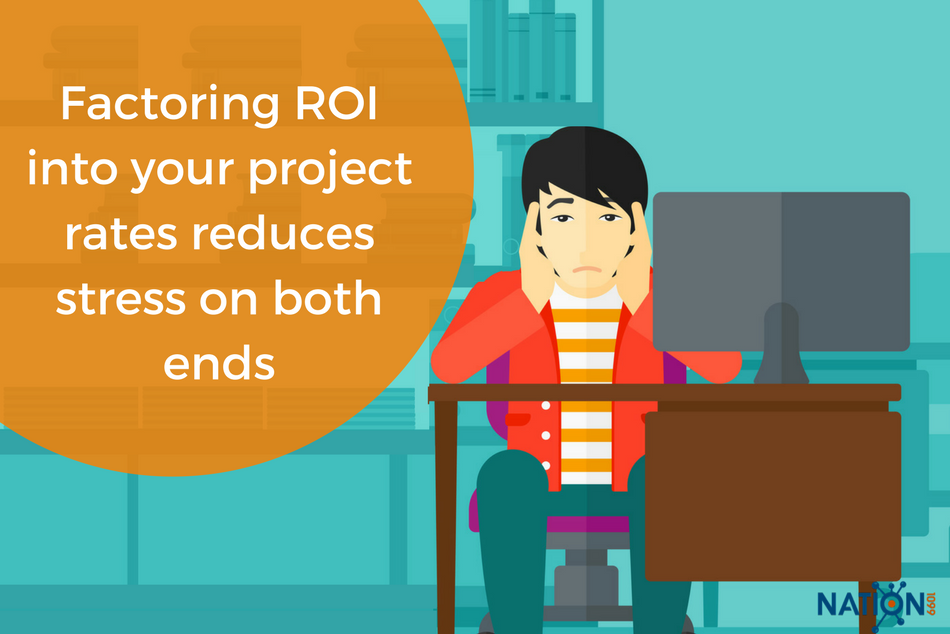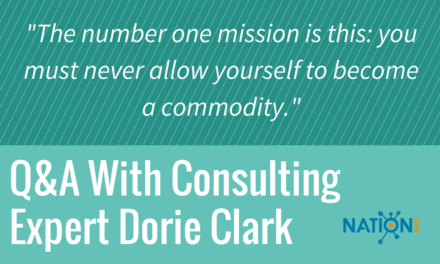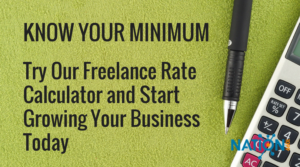Last time we discussed how to figure out the value you provide to your clients with four simple questions. Once you understand your own value, you are in a position for better consultant pricing. You can approach your negotiations from a position of confidence.
But consultant pricing can still be a mystery for many solos. The default starting point for freelancers is typically an hourly rate — that’s probably the way you’ve been paid in previous jobs.
Alternatively, you may be considering trying flat-rate pricing or value-based pricing. You’ve probably heard more established freelancers talking about both of those approaches — though they both may feel like foreign concepts when you’re getting started.
These are all good models and each has a place in your pricing tool belt. Today I’m going to show you where those places are.
Getting started with consultant pricing: Charging by hourly rate
This is the default for most people when they start freelancing. Some find a figure by doing some Googling — some ask freelancing friends. But many use their last nine-to-five as a gauge. This is fine but most new freelancers don’t arrive at the right figure and lose time and money because of this error. The example below will illustrate the point.
How to really make the hourly rate viable
Say Mary made $60k a year at her previous job. She divides that by 48 weeks and then by 40 hours a week. That gets her $31.25 per hour. She rounds it up to $40 and calls it good. She now has an hourly rate making nearly $9 more an hour — a raise of that quantity would be awesome for almost any job.
This is the first faulty assumption that most freelancers make with consultant pricing. They assume that they are going to bill 40 hours a week to a client. If you want to do that, plan to work at least 60 hours a week.
In the office world, you still got paid the same even when you arrived a few minutes late or when you stopped to get a coffee — as a freelancer those minutes aren’t on the clock. That means you’re not getting paid for them.
The most productive freelancers I know bill between 4-6 hours a day to a client. Assuming you’re in the middle and bill 5 hours a day, that means you need to divide your prior salary by 25 hours. That puts your hourly rate at $50. To give yourself a ‘raise’ make it $60.
The limitations of the hourly rate
The second faulty assumption is that your client cares what you got paid at your previous job. Your client cares about their own budget. If you have a project you estimate will take 100 hours and then charge $6000 for it, your client could still think you’re out to lunch with your pricing.
Then we often get into the dreaded negotiation phase. Here your client tries to get your pricing in line with their expectations. They try to convince you that the project won’t take so long. They try to bring the price down. They’re not being mean; they want to get the maximum value out of the deal.
It also puts you in the position where if you want to make more money on a project you need to take longer to do it. When I started working with WordPress, I made more on my first site builds because they took longer. I was learning and charging the client for it. As I got faster at building WordPress themes, it took less time and I earned less.
You can see why this led naturally to a fixed-rate approach.
Getting faster: Setting a fixed-fee
Fixed fee. Flat rate. Fixed rate — whatever you call it, it means that you charge a single price for a specific service. Say you charge $2500 for a WordPress theme, or $200 for a blog. You may specify certain things this rate won’t cover — the website fixed rate may not include eCommerce or your blog may only include one interview — and extras can be available for additional cost. But for the most part, you charge everyone the same rate for their project.
With this method, as you get faster, you have higher profit. A job that used to take you 10 hours now takes you eight and you still earn the same amount. This rewards you for your experience, but may still not sit well with your prospects.
You may also use fixed rate pricing for days or weeks of work. You may decide to charge $800 a day for your services or $3K a week. Whatever the particulars are, you’re charging a fixed rate for access to your skills.
Getting to know your customers better: Value-based pricing
The way most solos execute hourly and fixed-rate pricing methods misses one crucial element. They don’t factor in the value the customer will get from the work. Late last year I quoted a project at $8000. It was complex and I felt it would bring a decent increase to the prospect’s sales.
The problem is, I had made a faulty assumption about what sort of income the website was already generating for the client. As I presented the proposal I could tell the prospect wasn’t going for the pricing. I stopped and asked them what was up.
It turned out that while I assumed the site was earning a high five figures a year, it was actually earning $8000 a year.
It would have been ludicrous for them to spend $8k on the project. Many freelancers are in that boat. They are only guessing the value the client will get from the project — if they think, even pause, to consider the value to the prospect at all.
How to make consultant pricing work with ROI
One of the key items you need to flesh out with your prospects is what their return on investment will be. Pricing without knowing what your prospect’s potential upside is means you’re guessing blindly at what they’ll pay.
For every project you do, there should be a fairly clear path towards at least a three times return for your prospect. That means if you’re going to charge $1000, you and your client should be able to see they will make $3000. Better yet, shoot for 10x return or $10,000.
Freelance Rate Calculator: Know Your Expenses To Know Your Minimum
Finding the return on investment
The best way to determine a project’s potential ROI is to ask your prospects.
One of my initial questions to every prospect is, “How will we measure if this project is profitable for you?”. I don’t go any further until we have that written down. Then during our initial phone call we drill down on that metric. We make sure we have a good handle on how much they’re going to get as a return.
I do this before I’ve given much thought to the final pricing for the project.
Whether you choose hourly or flat-rate pricing, make sure you don’t neglect the return on investment that your prospect will get from the work. If you can take this into account, and show prospects that they’ll get at least a 3x return, you’ll land more projects and do higher value work.
What if the ROI is very weak? Does this consultant pricing model fail?
Definitely not. Sometimes it will mean telling a prospect they shouldn’t pursue the project because you don’t see a true return on investment. They’ll thank you for that feedback.
You’ll likely be the only person who was willing to tell them they should reconsider the project; everyone else just sent them a quote. Who do you think they’ll call next time? Make sure that you have a substantial conversation with every prospect you talk to about the value they’re going to get out of your work.
Once you have this knowledge, you can choose the consultant pricing strategy that fits with the value you provide and the value the client will get out of the project.
Remember: High quality and long-term client relationships are far more important to the consultant’s career than an inconsistent stream of low-value jobs. Good consultant pricing models take this into consideration.
Curtis McHale
Guest Contributor
Curtis is a business coach and speaker. He focuses on helping businesses build effective processes for vetting ideal clients and building a business that doesn’t take every hour of every day to run.










